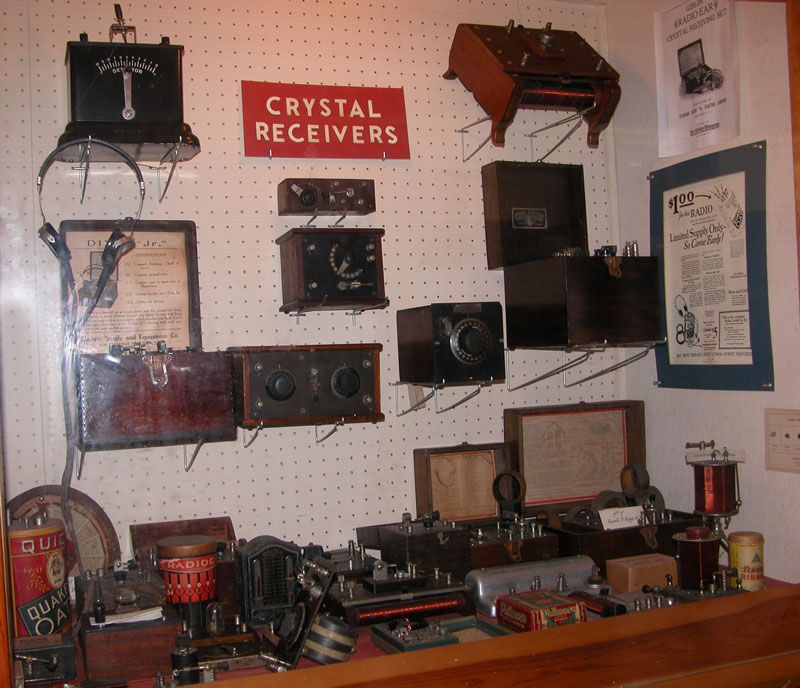After World War I, almost everybody had a crystal set. There were all kinds of pet ways to build them and there were literally thousands of different manufacturers.
Fred – “What’s the basic principle of a crystal set?”
Nothing but a tuned circuit, an antenna feeding the tuned circuit, antenna through the coil to ground, the rectifier, which is the detector, or crystal, which changes the alternating current radio frequency to direct current so that the direct current can actuate the diaphragm of the earphone. So all there is to it is antenna, tuning coil, crystal, tuning condenser, and earphones…and a ground. There’s nothing more. And there were literally thousands of makers. The Quaker Oats Company was sharp enough to realize that their oats box made a very practical coil form, and so they actually sold Quaker Oats in a box with a crystal set built on the end of it. You could buy that in a grocery store.
Fred – “And kids grew up making these things. You did, I suppose?”
Oh, absolutely. I made one with a single earphone, that is, half of that pair of earphones. And I unscrewed the top, and inside there was room enough so that I could put a crystal in there with a cat whisker, and I had a little wire with an alligator clip on the end, and another little wire that I could clip to the school desk. My desk was by the window at Rhodes School in Edgewood, and I used to sneak over and clip the clip on the radiator pipe, and clip the other clip on the frame of my desk and listen to the radio. It was easy to do because there was a broadcast station at the end of Shaw Avenue, WDWF, Dutee W. Flint. He was Henry Ford’s champion automobile salesman, and he had a big mansion on Allen’s Avenue in Edgewood, down at the end of Shaw Avenue, right next to Edgewood Yacht Club. So, obviously, he had a strong signal. It didn’t take much to listen to WDWF.
Fred – “Now, some of these look much fancier, you see, in a fancy box. Were those professional?”
Yes, well, like anything, they try to gussie it up. Also, they change wavelengths. This one on the right, you can see, has three separate coils. You can plug them in to tune a different band.
Text from the transcript of a tour of New England Wireless & Steam Museum’s Wireless Building given by Robert W. Merriam on a winter day in 2012. Transcription by Craig H. Moody, K1CHM. Edited by Fred Jaggi.
